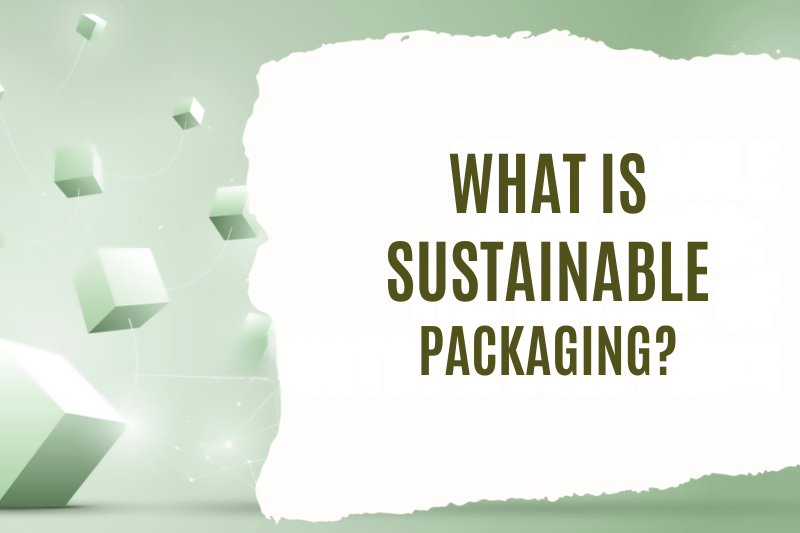In a world where environmental consciousness is becoming part of everyday life, sustainable packaging trends are leading the way toward a greener, more responsible future.
Whether you’re running an online store, managing a brand, or simply curious about eco-friendly alternatives—understanding these trends is essential.
Using sustainable packaging not only reduces your carbon footprint but also connects you with modern consumers who value ethical choices. Let’s walk through the most important sustainable packaging trends of 2025, along with their benefits, drawbacks, and practical usage—all explained in an easy-to-understand way.
📦 What is Sustainable Packaging?

Sustainable packaging refers to the use of materials and designs that minimize environmental impact throughout their lifecycle. It includes:
Using recyclable, biodegradable, or compostable materials
Reducing excess packaging
Designing for reuse or easy recycling
It’s not just about protecting the planet—it’s also about staying relevant in a competitive market.
♻️ Top Sustainable Packaging Trends in 2025
Let’s break down each trend and see what’s making waves in the packaging world this year.
🌱 1. Biodegradable and Compostable Packaging
Biodegradable materials break down naturally, while compostable packaging decomposes into nutrient-rich matter under the right conditions.
Material Examples:PLA (corn-based plastic), Bagasse (sugarcane), Kraft paper
Common Uses :Food trays, wrappers, disposable cutlery |
✅ Benefits:
Needs proper disposal to biodegrade fully
Reduces pollution in oceans and landfills
Safe for wildlife and ecosystems
Great for single-use items in food and retail
❌ Drawbacks:
Limited shelf life and strength
🍃 2. Plant-Based Packaging
This trend uses renewable crops like corn, seaweed, mushrooms, and bamboo to replace petroleum-based plastics.
Material Examples :Mycelium, Seaweed film, Bamboo, Cornstarch bioplastic
Common Uses :Takeaway boxes, flexible pouches, shipping containers
✅ Benefits:
Lower carbon emissions
Comes from renewable sources
Biodegradable in many cases
❌ Drawbacks:
Higher production costs
May require industrial composting facilities
🔄 3. Recyclable and Reusable Packaging
Instead of throwing away packaging, these solutions encourage reuse and recycling. Common materials include cardboard, glass, aluminum, and certain plastics.
Material Examples : Recyclable PET, Glass, Aluminum, Corrugated cardboard
Common Uses : Bottles, jars, mailing boxes, refillable containers
✅ Benefits:
Supports the circular economy
Customers love reusable designs
Cost-effective over time
❌ Drawbacks:
Relies on consumer participation
Requires infrastructure for recycling
4. Minimalist Packaging Design
This trend cuts down on excessive packaging and focuses on **functionality over flair**.
Style Examples : Plain kraft paper, single-layer boxes, digital label
Common Uses :Electronics, cosmetics, e-commerce |
✅ Benefits:
Reduces material waste and shipping cost
Gives a sleek, modern look
Appeals to eco-conscious buyers
❌ Drawbacks:
Less branding space
May not provide enough protection for fragile products
5. Smart and Transparent Packaging
Using QR codes, digital labels, or blockchain tracking, smart packaging allows customers to scan and learn about sustainability credentials, origin, and disposal methods.
Tech Features: QR codes, AR experiences, Recyclability scanners
Common Uses:Premium products, sustainable foods, cosmetics
✅ Benefits:
Educates customers
Builds brand transparency and trust
Reduces misinformation about recycling
❌ Drawbacks:
Tech integration costs
Requires smartphone access
6-Recycling packaging
Upcycled packaging uses waste materials (e.g., discarded fabric, coffee grounds, agricultural waste) to make new packaging products.
Material Examples: Denim scraps, coconut husk, pineapple leaves, coffee pulp
Common Uses : Gift boxes, boutique wrapping, eco-stationery |
✅ Benefits:
Unique and artistic appeal
Diverts waste from landfills
Great for storytelling and branding
❌ Drawbacks:
Supply may be inconsistent
Not suitable for high-volume packaging
You may also like to read these posts:
https://printcod.com/wp-admin/post.php?post=210&action=edit
https://printcod.com/wp-admin/post.php?post=208&action=edit
https://printcod.com/wp-admin/post.php?post=212&action=edit
https://printcod.com/wp-admin/post.php?post=202&action=edit
💡 Why Sustainable Packaging Trends Matter in 2025

🌍 Environmental Regulations: Governments worldwide are banning or taxing single-use plastics.
💼 Brand Responsibility: Consumers expect brands to take action against pollution.
💚 Customer Preference: Over 70% of Gen Z and Millennials prefer sustainable packaging.
📈 Marketing Edge: Sustainable packaging is a powerful part of your brand story.
📉 Pros and Cons of Adopting Sustainable Packaging
| ✅ Pros | | ❌ Cons |
| Reduces environmental impact | Higher upfront costs |
| Attracts eco-conscious consumers | Supply chain complexity |
| Boosts brand image and trust | Limited durability in some options |
| May reduce shipping/storage costs | Disposal methods may vary by location |
📝 Final Words
In 2025, following **sustainable packaging trends** isn’t just a nice-to-have—it’s a must for forward-thinking brands. From plant-based solutions to upcycled creativity, the future of packaging is not only green but smart, reusable, and beautifully minimal.
So whether you’re launching a new product or rebranding your business, choosing eco-friendly packaging is one of the smartest decisions you can make for your customers and the planet.
🙋♀️ FAQs
Q1. What are sustainable packaging trends?
Answer: Sustainable packaging trends refer to the latest innovations and practices in the packaging industry that aim to reduce environmental harm. These include using biodegradable materials, plant-based plastics, recyclable containers, minimalistic designs, and smart packaging with digital tracking.
Q2. Why are sustainable packaging trends important in 2025?
Answer: In 2025, climate awareness is stronger than ever. Sustainable packaging trends help businesses lower their carbon footprint, meet eco-regulations, and appeal to environmentally-conscious consumers. It’s both a business strategy and a responsibility to the planet.
Q3. Is sustainable packaging more expensive?
Answer: Initially, yes. Many sustainable materials cost more than traditional plastic or foam. However, long-term benefits like reduced waste, customer loyalty, and lower environmental impact often outweigh the higher upfront costs.
Q4. Which sustainable packaging trend is best for food products?
Answer: Biodegradable and compostable packaging (like bagasse trays or PLA wrappers) is ideal for food products. It’s safe, eco-friendly, and breaks down easily after use.
Q5. Can small businesses adopt sustainable packaging?
Answer: Absolutely! Small businesses can start with simple changes like using recyclable paper packaging, switching to compostable bags, or offering reusable containers. Many suppliers now offer budget-friendly sustainable options.





